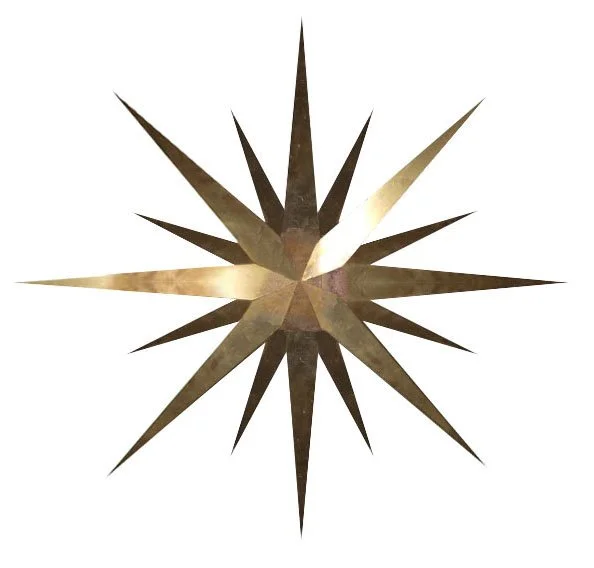“Thou shall go before the face of the Lord to prepare his ways; and to give knowledge of salvation unto his people by the remission of their sins, through the tender mercy of our God; whereby the DAYSPRING from on high has visited us, to give light to them that sit in darkness and in the shadow of death, to guide our feet into the way of peace.”
—Luke 1:76-79
The name Dayspring symbolizes the rising sun – hence the solid brass starburst emblem throughout the house on the main fireplace and surrounding every door handle – and it has a Biblical derivation.
Dayspring is the largest home in St. Andrews-by-the-Sea, New Brunswick, Canada. It was built in 1928 for Lewis Egerton Smoot, an American businessman from Washington who was the brother of a famous American Senator who was co-author of the protectionist Smoot-Hawley Act.
In 1947 Dayspring was sold to Algoma Steel, of Sault Ste. Marie, Ontario, a large steel company then owned and controlled by Sir James Dunn. Algoma transferred ownership to Sir James and he and his third wife, Marcia Anastasia Christoforides [known to everyone as “Christofer”] made it their principal residence. The Dunns were insistent on privacy, and built a large 8 foot high wooden wall around the entire multi-acre property to ensure no prying eyes could look in. They entertained lavishly and every Saturday when they were in residence, even showed first-run Hollywood movies flown in from New York on Dunn’s personal DC3 Aircraft. They were very fond of small dogs, and set up their own personal veterinarian, Forbes McLeod, and his wife Ruth, in the neighbouring house, Daytime, which they purchased from Lady Davis [wife of Sir Mortimer Davis of Imperial Tobacco and founder of the Jewish General Hospital in Montreal.
Sir James Dunn died on January 1st 1956 and Christofer inherited Dayspring, and continued to live there. In 1964 she married Lord Beaverbrook, one of Sir James Dunn’s childhood friends. She continued to live at Dayspring until even after Lord Beaverbrook died in 1964, and right up until 1990 when she got into a dispute with the famous neighbouring Algonquin Hotel over their proposed annex, stopped all funding to the Town of St. Andrews, and returned to England. She died in 1994.
In 1995 Dayspring was purchased by Vincent Prager, a lawyer from Montreal specializing in maritime law and the only son of Eva Prager O.C. and Richard Prager, and eldest grandson of Joseph Oppenheimer R.P. He lived at Dayspring until 2011 when he donated Dayspring to The Joseph and Fanny Oppenheimer Foundation so that a Museum could be opened – the Oppenheimer-Prager Museum at Dayspring – to exhibit works by Joseph Oppenheimer and Eva Prager, as well as interesting objects, jewelry, memorabilia and classic cars, Vincent’s hobby, as well as objects and photos related to the Dunn’s, Beaverbrook and Dayspring itself.
Dayspring itself is not only the space containing the Museum – it is in itself part of the exhibit as an architecturally-interesting building as well as the home of historic personages and the scene of many interesting events. The walls are all ¾” thick knot-free B.C. fir. The floors are ¾” thick white English oak – a sample of the flooring sent to the Smoots when the house was under construction is on display. There is a cathedral ceilinged Great Room, an octagonal dining room, two defence turrets, a large oval copper sink, cupboards within cupboards, a functioning inter-room bell system for calling staff, 1960’s period pastel-coloured bathrooms, and a working wood-burning stove to name just a few of the interesting features, and not to mention beautiful grounds and ocean views.


